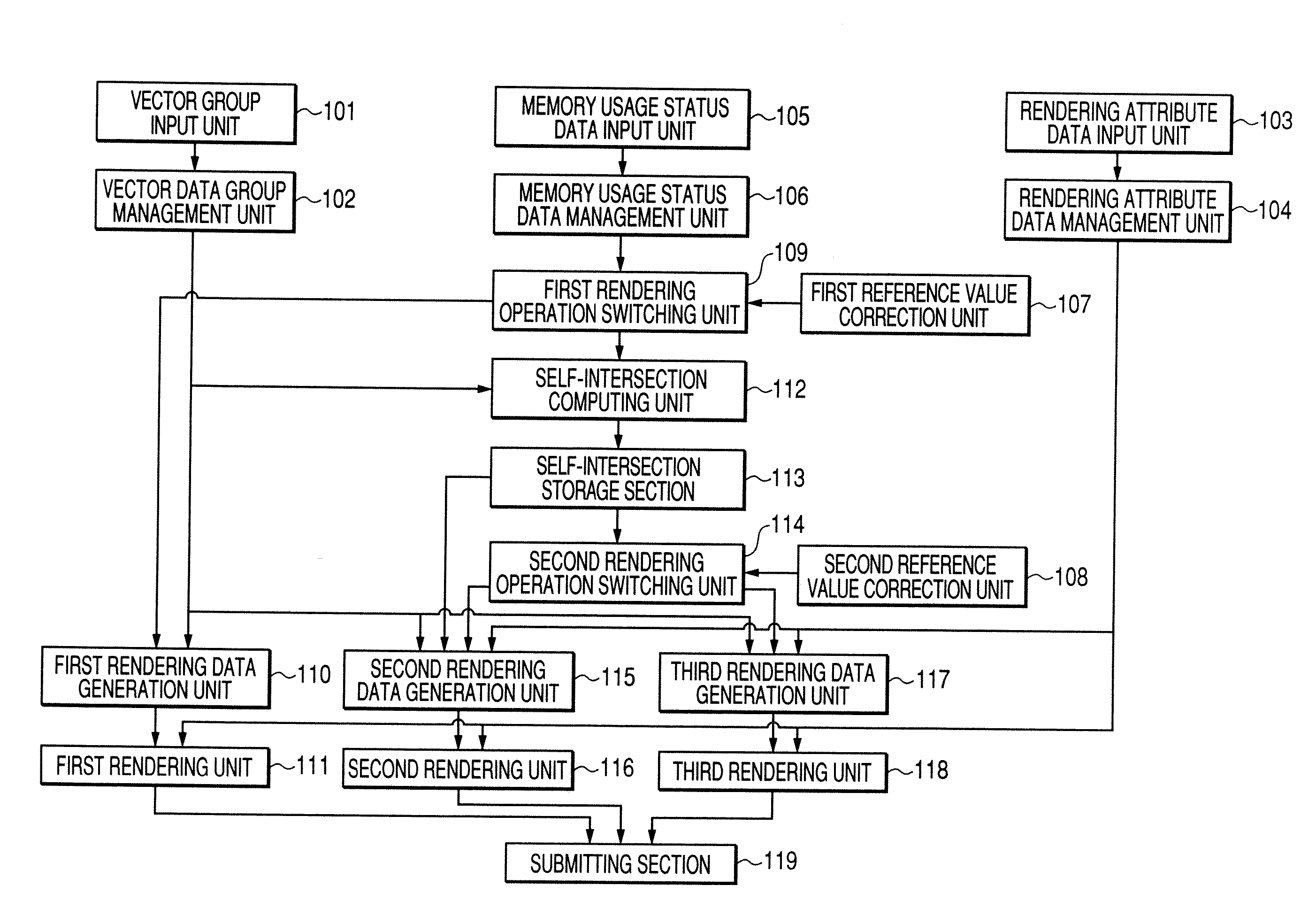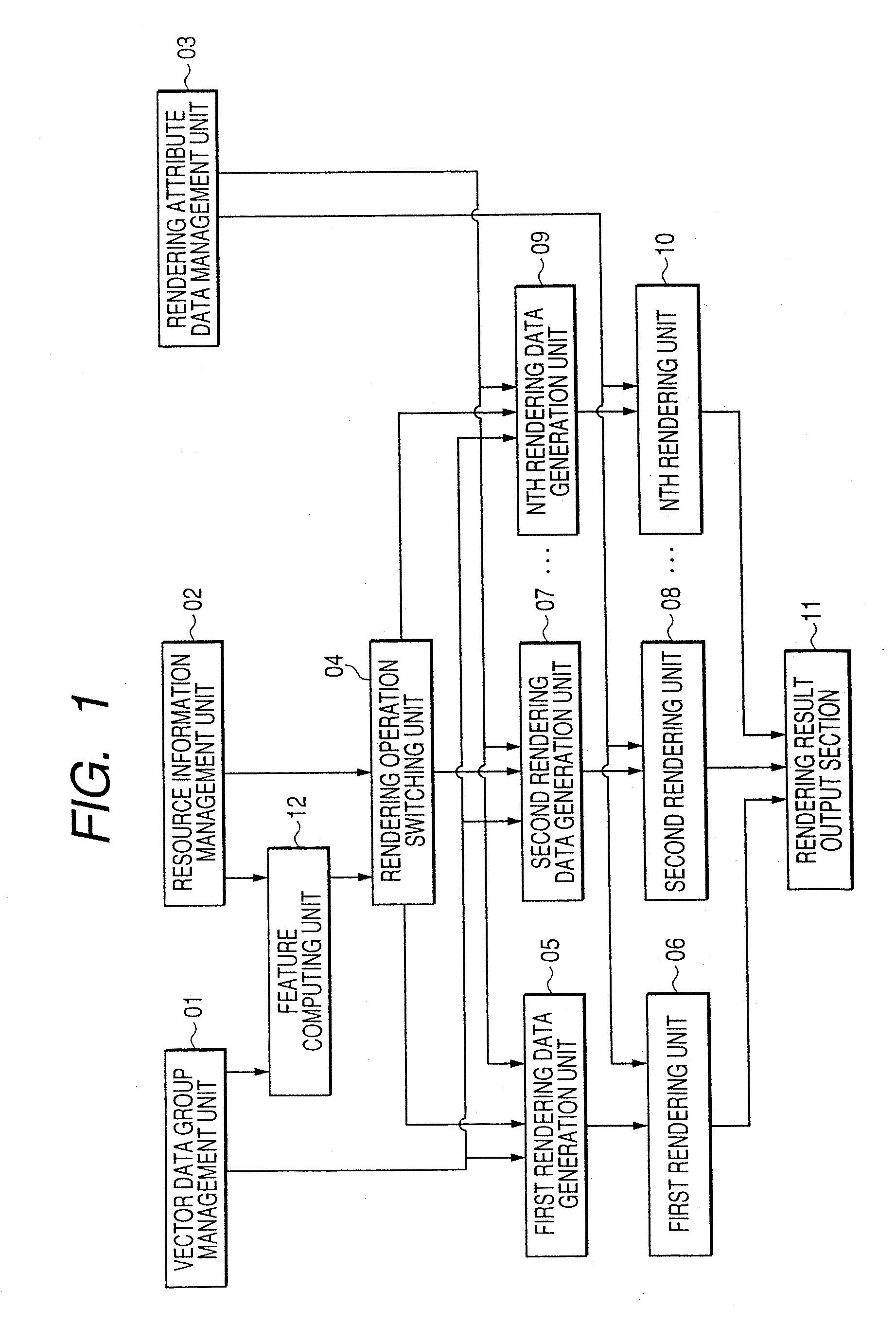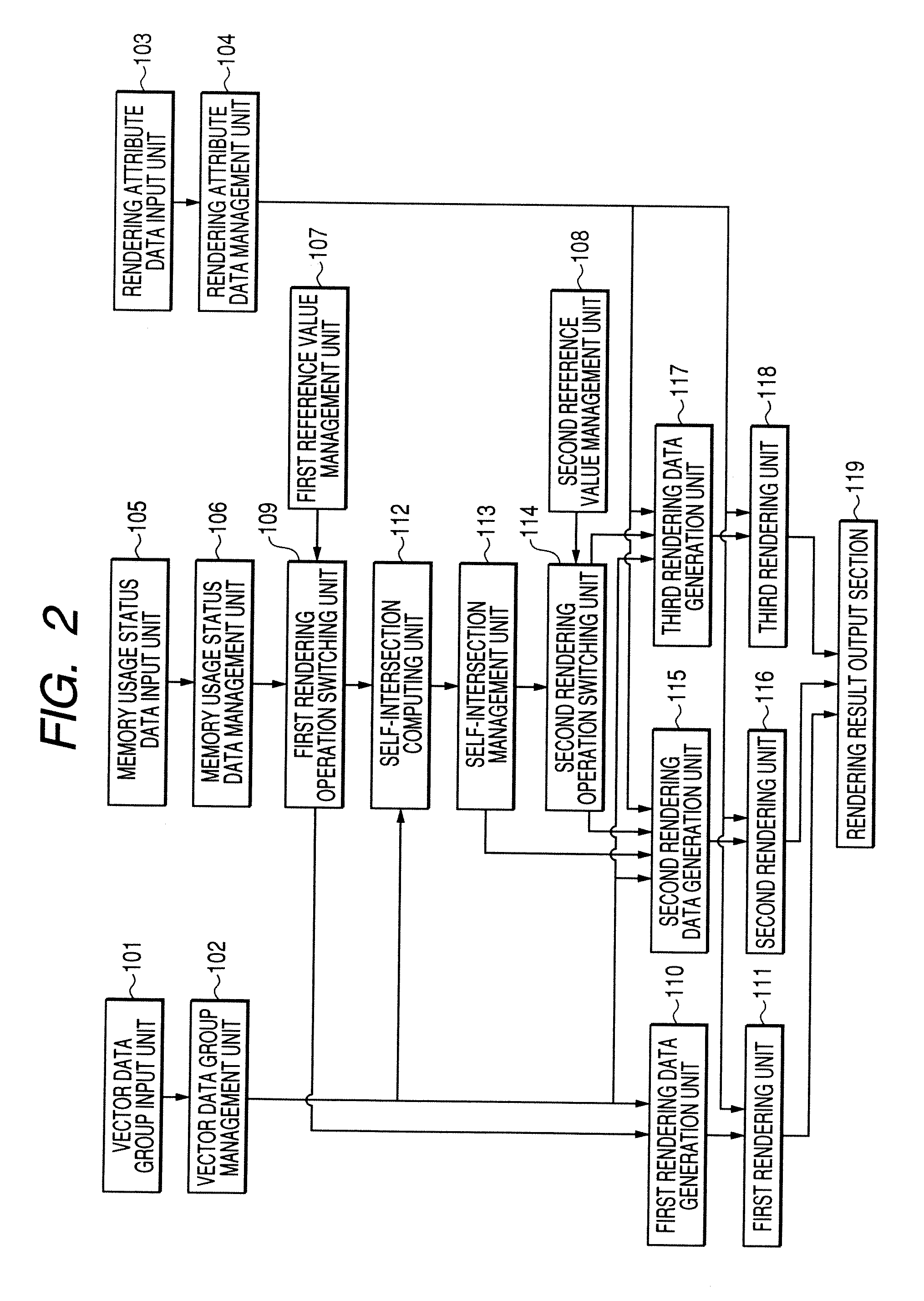Graphics-rendering apparatus
- Summary
- Abstract
- Description
- Claims
- Application Information
AI Technical Summary
Benefits of technology
Problems solved by technology
Method used
Image
Examples
first embodiment
[0058] A first embodiment of the present invention will now be described.
[0059] The first embodiment shows an example graphics-rendering apparatus which takes, as an input, a vector data group showing the outline of a polygon; and which selects high-speed polygon rendering operation according to the status of resources in the apparatus achieved during rendering operation to thus perform rendering operation.
Overall Configuration
[0060]FIG. 2 is a block diagram of a graphics-rendering apparatus according to the first embodiment.
[0061] The graphics-rendering apparatus of the first embodiment includes: a vector data group input unit 101 for inputting a vector data group representing the outline of a polygon; a vector data group management unit 102 for managing a vector data group which represents the outline of the polygon and has been input through the vector data group input unit 101; a rendering attribute data input unit 103 for inputting rendering attribute data representing att...
second embodiment
[0170] The second embodiment shows an example graphics-rendering apparatus which takes, as inputs, vector data pertaining to a sweep line and vector data pertaining to a shape swept along a sweep line and which selects high-speed rendering of a graphic object to be swept against the backdrop of the apparatus during rendering operation, thereby performing rendering operation.
[0171]FIG. 14 shows a graphics-rendering apparatus according to the second embodiment of the present invention. The graphics-rendering apparatus of the second embodiment includes: a sweep line data input unit 1101 for inputting a vector data group showing a sweep line; a sweep line data management unit 1102 for storing the sweep line data input through the sweep line data input unit 1101; a sweep shape data input unit 1103 for inputting a vector data group showing a shape to be swept; a sweep shape data management unit 1104 for managing the sweep shape data input through the sweep shape data input unit 1103; a r...
PUM
 Login to View More
Login to View More Abstract
Description
Claims
Application Information
 Login to View More
Login to View More - R&D
- Intellectual Property
- Life Sciences
- Materials
- Tech Scout
- Unparalleled Data Quality
- Higher Quality Content
- 60% Fewer Hallucinations
Browse by: Latest US Patents, China's latest patents, Technical Efficacy Thesaurus, Application Domain, Technology Topic, Popular Technical Reports.
© 2025 PatSnap. All rights reserved.Legal|Privacy policy|Modern Slavery Act Transparency Statement|Sitemap|About US| Contact US: help@patsnap.com



